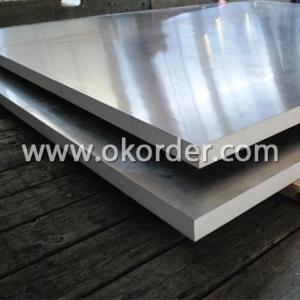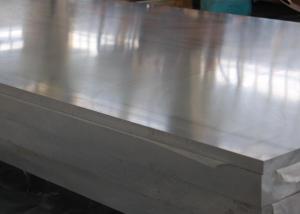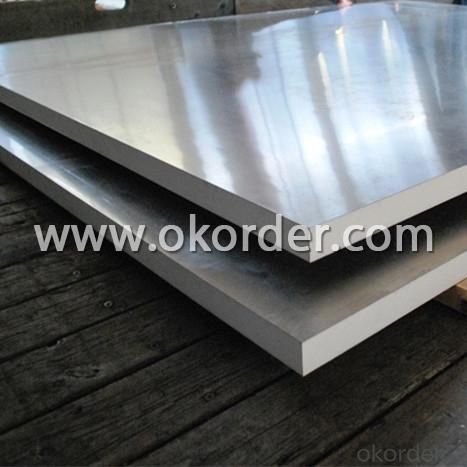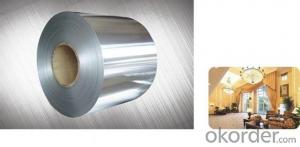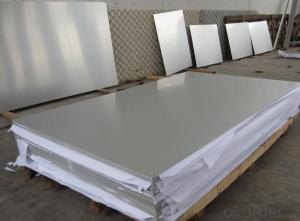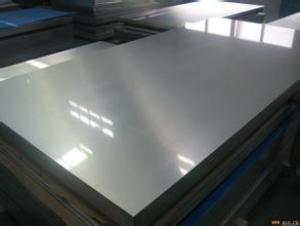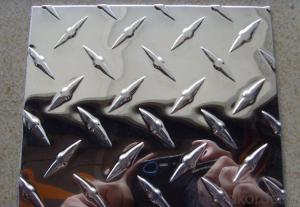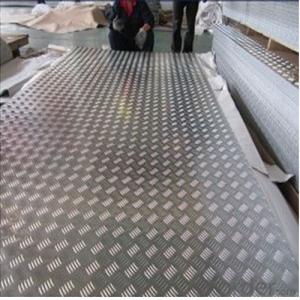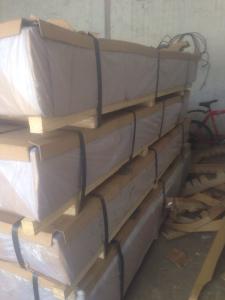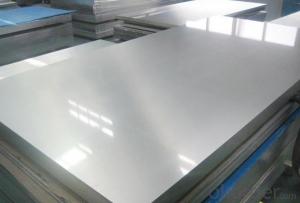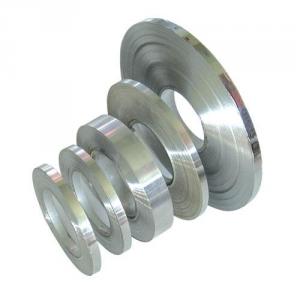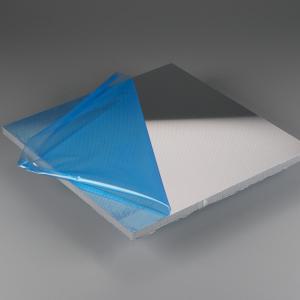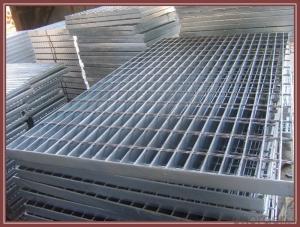Price of Aluminum Diamond Plate Sheets with Mill Finished Surface AA1XXX
- Loading Port:
- Ningbo
- Payment Terms:
- TT or LC
- Min Order Qty:
- 5 m.t.
- Supply Capability:
- 10000 m.t./month
OKorder Service Pledge
OKorder Financial Service
You Might Also Like
1.Structure of Aluminum Sheets with Mill Finished Surface AA1XXX
Aluminum Sheets with Mill Finished Surface AA1XXX are strengthened and cut from raw materials with different alloys, such as AA1100, AA1050, AA1060, etc.
Aluminum Sheets with Mill Finished Surface AA1XXX are light, easy for processing in different shapes, good in intensity and can be quickly installed.
Aluminum Sheets with Mill Finished Surface AA1XXX are widely used in curtain walls, roofing, decoration, boats, airframes, instrument panels, etc.
2.Main Features of Aluminum Sheets with Mill Finished Surface AA1XXX
•High intensity
•Easy to be processed and shaped
•Weather resistance
•Anti-pollution & environment protection
3.Aluminum Sheets with Mill Finished Surface AA1XXX Images
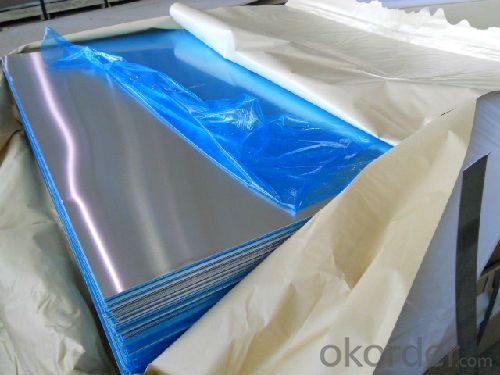
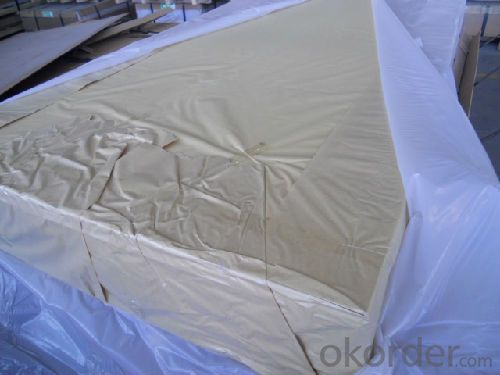
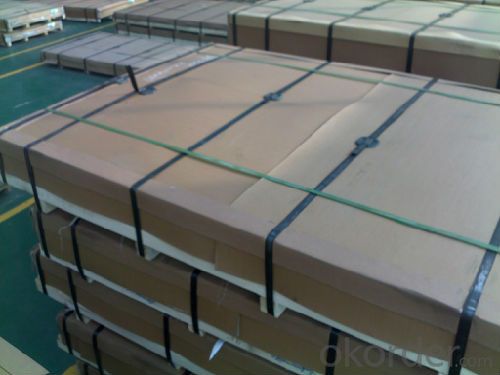
4.Specification of Aluminum Sheets with Mill Finished Surface AA1XXX
Alloy Number | AA1XXX |
Temper | H12, H14, H16, H18, H22, H24, H26, H32, HO, F |
Thickness | 0.1mm – 500mm |
Width | 10mm- 2200mm |
Standard | GB/T3880-2006, ASTM, ISO, EU standard |
5.FAQ of Aluminum Sheets with Mill Finished Surface AA1XXX
A.What about inspections to guarantee quality?
For each order for Aluminum Sheets with Mill Finished Surface AA1XXX, we will arrange strict inspection for raw materials, inspection during production and inspection for finished goods.
With requirement of customers, we also can arrange the third party inspection.
B.What about delivery?
We will put order for Aluminum Sheets with Mill Finished Surface AA1XXX in production schedule after order gets confirmed against copy of TT or L/C. Normally it takes about one month for production. Exact shipment schedule is different based on different sizes and quantity.
C.What is the MOQ?
5 tons for each size.
D. Where have you exported aluminium sheets?
We have exported aluminum sheets to many countries. Main markets include South East Asia, Middle East, North America, South America, etc.
The Various Uses of Aluminium
Aluminium is a naturally occurring element with in the earth. It is found in abundance, which renders it low cost, and it is an extremely versatile product owing to its numerous beneficial properties. It is used extensively around us both within our homes and in the outside environment. Aluminium is employed in various forms which is why you will see this metal not only in your bathrooms and kitchens, but also in grocery stores, vehicles, electronics, industries, airplanes and what not.
Aluminium can be bended and shaped into almost anything. But it is mostly because of its non-corrosive nature that it is used in production of mechanical parts for cars and airplanes and in the manufacturing of packaging materials to carry edible products. And if that was not enough, aluminium also has a distinguishing quality of being a terrific conductor of both heat and electricity so that not only can it be used for induction purposes but also for the production of electrical components like wires, filaments and electric grills etc.
Have a look around your kitchen and you will instantly spot numerous items that are produced using aluminium. For example, the many tins that are stored in your pantry, the caps that seal the beer and other liquid containing bottles; what do you think they are made up of?
The various electronics that we use while being in the kitchen are made up of numerous components that are produced using aluminium sheets or rods. Because of its lightweight, low cost and resistance to corrosion, it is the best material to be used for window frames, especially in houses and apartments that are situated closer to the salty sea air.
Have you noticed how the car manufacturing giants have managed to bring down the cost of the newer cars while upping the fuel economy and luxury amenities? Believe it or not, but aluminium has a large role to play in that. When parts made from aluminium are fit into the car, it considerably brings down the cost of the vehicle, while at the same time the lightweight of the components reduces load on the engine and increases fuel efficiency.
Aluminium has also proved to be wondrous when it comes to the production of the marine vehicles used for cryogenic applications. Not only does it not react with the corrosive properties of the oceanic water, scientists have also found that aluminium reaches a great strength when it comes in contact with insanely cold temperatures.
- Q: What are the dimensions and thickness options for aluminum sheets?
- The dimensions and thickness options for aluminum sheets can vary depending on the supplier and specific requirements. Generally, aluminum sheets are available in various dimensions, such as 4ft x 8ft, 4ft x 10ft, or custom sizes. In terms of thickness, aluminum sheets can range from as thin as 0.006 inches (0.15 mm) to as thick as 0.25 inches (6.35 mm) or even thicker for specialized applications. It is important to consult with the supplier or manufacturer to determine the exact dimensions and thickness options available for aluminum sheets.
- Q: Is it possible to incorporate recycled aluminum sheets into a construction project?
- <p>Yes, you can use recycled aluminum sheets in your building project. Recycled aluminum is not only environmentally friendly but also cost-effective. It maintains the same strength and durability as new aluminum, making it suitable for various construction applications such as roofing, siding, and structural components. Ensure that the recycled aluminum meets the required standards and specifications for your project to guarantee safety and performance.</p>
- Q: How are aluminum sheets different from aluminum plates?
- Aluminum sheets and aluminum plates differ primarily in terms of thickness and applications. Aluminum sheets are typically thinner, ranging from 0.2mm to 6mm in thickness, whereas aluminum plates are thicker, usually starting from 6mm and going up to several inches thick. Aluminum sheets are commonly used for general purposes such as packaging, signage, and roofing due to their lightweight nature and flexibility. They are often bent, formed, and cut into various shapes and sizes to fulfill specific requirements. On the other hand, aluminum plates are typically used in applications that require higher strength and durability. With their greater thickness, they provide enhanced structural integrity and are commonly utilized in industries such as aerospace, automotive, and construction. Aluminum plates can withstand heavy loads and are often used as structural components in buildings, aircraft, and machinery. In summary, the main differences between aluminum sheets and aluminum plates lie in their thickness and the specific applications they are suited for. Sheets are thinner and more flexible, suitable for general purposes, while plates are thicker and stronger, ideal for heavy-duty applications that require structural integrity.
- Q: How do you prevent oxidation of aluminum sheets?
- One way to prevent oxidation of aluminum sheets is by applying a protective coating or paint to the surface. This barrier creates a physical barrier between the aluminum and oxygen, preventing the oxidation process from occurring. Additionally, storing the aluminum sheets in a dry and controlled environment, away from moisture and humidity, can help minimize the chances of oxidation.
- Q: What is the fatigue life of aluminum sheets?
- The fatigue life of aluminum sheets refers to the number of cycles that the material can withstand before failure occurs under cyclic loading conditions. The fatigue life of aluminum sheets can vary depending on various factors such as the alloy composition, thickness, surface finish, loading conditions, and environmental factors. Aluminum is known for its relatively high fatigue strength compared to other materials, making it a popular choice in various industries including aerospace, automotive, and construction. The fatigue life of aluminum sheets is typically influenced by the presence of microstructural defects such as inclusions, voids, and grain boundaries. To determine the fatigue life of aluminum sheets, fatigue tests are conducted using standardized procedures such as ASTM E466 or ASTM E606. These tests involve subjecting the material to cyclic loading conditions, typically at a constant stress or strain amplitude, while monitoring the number of cycles required for failure to occur. The results are then used to generate an S-N curve, which represents the relationship between the applied stress or strain amplitude and the number of cycles to failure. The S-N curve provides valuable information about the fatigue life of aluminum sheets, indicating the stress or strain levels at which the material can withstand a certain number of cycles before failure. It is important to note that the fatigue life of aluminum sheets can be improved through various methods such as alloying, heat treatment, surface treatment, and proper design considerations. In conclusion, the fatigue life of aluminum sheets is a critical factor to consider when designing components or structures subjected to cyclic loading conditions. Understanding the specific properties and characteristics of the aluminum alloy, along with proper testing and analysis, can help determine the fatigue life and ensure the safe and reliable performance of aluminum sheets in various applications.
- Q: Can aluminum sheets be used for decorative wall panels?
- Aluminum sheets are indeed suitable for decorative wall panels. As a versatile material, aluminum offers a wide array of design options for wall panels. It is lightweight, durable, and resistant to corrosion, making it perfect for both indoor and outdoor applications. Aluminum sheets can be easily cut, formed, and fabricated into various shapes, patterns, and finishes, allowing for limitless design possibilities. Moreover, aluminum can be enhanced in appearance and provided with extra protection against wear and tear through powder-coating or anodizing. Whether it's for residential or commercial spaces, aluminum sheets can impart a modern and stylish touch to any wall, rendering them a highly sought-after choice for decorative wall panels.
- Q: How do you prevent discoloration of aluminum sheets?
- In order to avoid discoloration of aluminum sheets, there are a few steps that can be taken. First and foremost, it is crucial to regularly clean the aluminum sheets to eliminate any dirt or debris that may potentially cause discoloration. Utilize a mild detergent or a specialized aluminum cleaner, along with a soft cloth or sponge, to gently scrub the surface. It is advisable to refrain from using abrasive cleaners or scrubbing pads, as they have the potential to scratch the surface and increase the likelihood of discoloration. Secondly, it is essential to thoroughly rinse the sheets after cleaning to eradicate any residue from the cleaning products. Residual chemicals can react with the aluminum and result in discoloration over time. Another preventive measure entails applying a protective coating or sealant on the aluminum sheets. This can establish a barrier between the metal and the surrounding environment, thus preventing oxidation and discoloration. There are diverse types of protective coatings available, such as clear lacquers or anodizing treatments, which can enhance the durability and appearance of the aluminum sheets. Moreover, proper storage of the aluminum sheets is paramount to minimizing exposure to moisture, humidity, and extreme temperature fluctuations. Moisture can expedite the oxidation process and lead to discoloration. It is recommended to store the sheets in a dry and well-ventilated area, away from direct sunlight or sources of heat. Consistent maintenance is vital to prevent discoloration. Periodically inspect the aluminum sheets for any indications of discoloration or damage, and promptly address any issues that arise. By adhering to these preventive measures, the aesthetic appeal and longevity of aluminum sheets can be maintained.
- Q: Can aluminum sheets be used for heat exchangers?
- Yes, aluminum sheets can be used for heat exchangers. Aluminum is a highly efficient conductor of heat, making it an ideal material for heat exchangers. Its high thermal conductivity allows for excellent heat transfer between fluids, resulting in efficient heat exchange. Additionally, aluminum sheets are lightweight, corrosion-resistant, and have good mechanical properties, further contributing to their suitability for heat exchanger applications.
- Q: I am engaged in line cutting, because the cut aluminum plate conductive block wear more fierce, molybdenum wire is often broken card, I do not know that heroes have unique skills, say, we share. Thanks.
- The most effective way is to directly use the cutting aluminum electrode wire. Solve the problems of burning, conducting blocks, breaking wires, cutting workpieces and so on. Since the conductive system of machine tool of high and modified carbon brush structure is not the same, will cause the machine not successful,
- Q: Can aluminum sheets be welded or joined together?
- Indeed, welding or joining together aluminum sheets is possible. Aluminum possesses excellent weldability, allowing for its fusion through diverse welding techniques such as gas tungsten arc welding (GTAW), gas metal arc welding (GMAW), and laser welding. These methods involve the application of heat to liquefy the aluminum sheets and establish a robust connection. Furthermore, mechanical fasteners like screws, rivets, or adhesive bonding can also be employed to join aluminum sheets. The selection of the welding or joining approach hinges upon the particular application and the desired result.
1. Manufacturer Overview
| Location | Henan, China |
| Year Established | 1996 |
| Annual Output Value | Above US$200 Million |
| Main Markets | Mid East;Eastern Europe;North America |
| Company Certifications | ISO 9001:2000;ISO 14001:2004;OHSAS 18001 |
2. Manufacturer Certificates
| a) Certification Name | |
| Range | |
| Reference | |
| Validity Period |
3. Manufacturer Capability
| a) Trade Capacity | |
| Nearest Port | Shanghai |
| Export Percentage | 30%-50% |
| No.of Employees in Trade Department | 21-50 People |
| Language Spoken: | English;Chinese |
| b) Factory Information | |
| Factory Size: | Above 100,000 square meters |
| No. of Production Lines | Above 10 |
| Contract Manufacturing | OEM Service Offered;Design Service Offered |
| Product Price Range | Average |
Send your message to us
Price of Aluminum Diamond Plate Sheets with Mill Finished Surface AA1XXX
- Loading Port:
- Ningbo
- Payment Terms:
- TT or LC
- Min Order Qty:
- 5 m.t.
- Supply Capability:
- 10000 m.t./month
OKorder Service Pledge
OKorder Financial Service
Similar products
Hot products
Hot Searches
Related keywords
